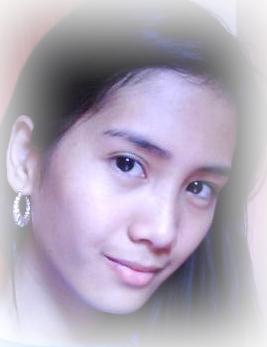
The Bicol region is not only known for its picturesque tourist destinations and its spicy Bicol Express; it also hosts diverse groups of Bicolanos that are recognizable by the languages they use. Their languages, all of which belong to the Austronesian language family, each has its own dialects and variants, as well as its own syntax and cadence. Hence, such distinctions give a diverse representation of the city or municipality from where they are spoken.
More about Bicolano Culture: Bicol: More Than A Six-Province Region and Spicy Dishes
Albay Bicolano
While Albay’s most famous tourist spot is the perfect cone-shaped Mt. Mayon, it is not the only thing it can boast in the region. With almost 2 million speakers, Albay Bikol, or simply Albayanon, is a language that lacks or rarely uses stressed syllables. It is said to be comparable to French in this regard, thus making it unique from other Bicolano languages. It is spoken in West Albay, Buhi, some parts of Camarines Sur, southwestern coast of Albay (Pio Duran, Jovellar), and northwestern Sorsogon, and has five dialects, namely, Buhi’non, Daraga, Libon, Oas, and Ligao.
Central Bicolano
For most Bicolanos, the language that is widely understood is Central Bicolano, also known as Bikol Naga or Bikol. With approximately 2,500,000 speakers, Central Bicolano is spoken mainly in Naga City, as well as in other locations such as Camarines Norte, Camarines Sur, southern Catanduanes, north of Albay, Sorsogon, Legaspi City, and San Pascual town in Masbate. Its unique feature is that it has vocabularies not found in the common Bikol language, as well as words that are similar to Kapampangan, such as matua (“older”), bitis (“foot”), and banggi (“night”), with the latter closer to the Kapampangan word bengi than the usual Bikol word gab-i. Still, there is no formal study about such links.
Its six dialects are the Canaman, Naga City, Partido, Tabaco–Legazpi–Sorsogon, Daet, and Virac dialects.
Iriga Bicolano
If we talk about a Bicolano language with both dialects and variants, it would be the Iriga Bicolano, or Rinconada Bicolano. With approximately 85,000 speakers, the language is mainly spoken in Iriga City, as well as in Baao, Nabua, and Bato in Camarines Sur.
The language has two dialects, which are subdivided into six variants.
The first dialect is the Sinabukid (the highland dialect), with two variants, namely, Iriga, which has a flat intonation and is spoken rapidly, with the most speakers; and Agta, which has a flat intonation with a distinct form of pronunciation, spoken exclusively by the indigenous population of the Agta/Aeta.
The second dialect is the Sinaranəw (lakeside dialect), with four variants, namely, Nabua–Balatan, notable for its high-pitched intonation; Bato, which has a distinctive mellow intonation; and the twin variants, Baao and Bula–Pili, both of which use a high pitch when reasoning but are distinguishable by the rising intonation of Baao, and the moderately flat intonation of Bula–Pili.
Northern Catanduanes Bicolano
For the Bicolanos of the Northern part of Catanduanes, the “Land of the Howling Winds,” Northern Catanduanes Bicolano or Pandan Bikol is the language that is used locally. Though it has approximately 122,000 speakers, the language is rarely used outside their local context. For example, Southern Catanduanes speakers have difficulty fully understanding Northern Catanduanes speakers (or Pandans), while Pandan speakers can fully understand the language spoken by those from Southern Catanduanes. That is why the recent Department of Education Order No. 74, which institutionalizes the use of the mother tongue as the language of learning and instruction, can hopefully address the attitudes of Pandans toward their own language.
To note, Northern Catanduanes speakers have voiced “R” in their accent, while Southern Catanduanes speakers have voiced “L.”
Southern Catanduanes Bicolano
The Southern Catanduanes Bicolano language, spoken by approximately 85,000 people, is similar to that of the Northern Catanduanes Bicolano language, with two exceptions:
First, Southern Catanduanes speakers cannot fully understand the Northern Catanduanes speech, while the Northern Catanduanes speakers have no problem understanding the Southern Catanduanes speech. This is because speakers of Northern Catanduanes would use their language around mostly native speakers, but would resort to using standard Bicol language, or even Southern Catanduanes language, with non-speakers. They would also use Filipino and English languages for primary communications.
Second, Northern Catanduanes speakers have a pronounced “R” in their accent, while Southern Catanduanes speakers have a pronounced “L.”
Sources
Ethnic Groups Philippines. Bicolano Albay
Ethnic Groups Philippines. Bicolano, Central
Ethnic Groups Philippines. Bicolano, Iriga
Ethnic Groups Philippines. Bicolano, Northern Catanduanes
Wikipedia.(2021, December 16). Albay Bikol language
Wikipedia.(2018, August 2018). Bicolano people
Wikipedia. (2021, October 12). Central Bikol language
Wikipedia. (2021, December 11). Rinconada Bicol language
Wikipedia. (2021, December 8). Pandan Bikol language
Wikipedia. Catanduanes
Gumba, Leslie, 2015. Background Research Report on Northern Catanduanes Bicolano (Electronic Survey Report 2015-002). SIL International
